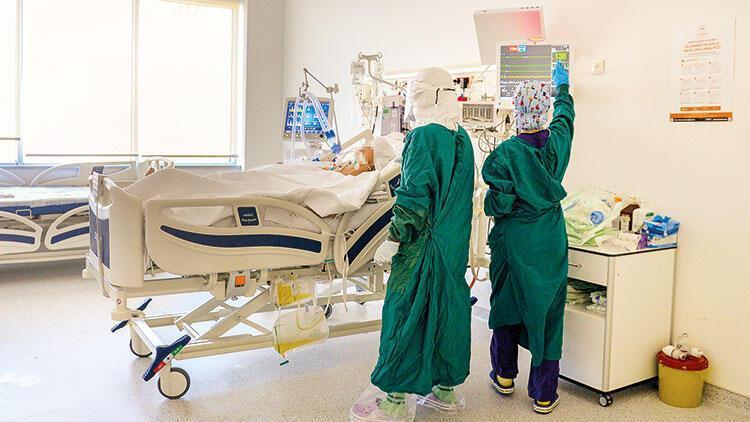
Some 4,000 Turkish doctors and 11,000 medical personnel in Ankara’s “pandemic towers” have been working non-stop to treat COVID-19 patients in the capital.
Dubbed the “Two Towers,” the pandemic towers consist of intensive care units (ICU) and services for COVID-19 patients at Ankara City Hospital. The majority of the patients who were being treated in these special units have recovered.
After the coronavirus outbreak emerged in Turkey, with the first case being confirmed on March 11, pandemic towers were established at Ankara City Hospital.
Many of the medical personnel underwent training for the novel coronavirus and began to perform their duties in intensive care units and pandemic services where COVID-19 patients started getting treatment.
There are places allocated in the ground floor of the special units for medical personnel to take showers, clean their hospital outfits in the laundry rooms, dry them and get ready for the next day’s fight against the pandemic.
Prof. Seval İzdeş, who is in charge of the hospital’s ICUs, told daily Hürriyet that in the first days they were sleep deprived. But, she said, everything is “back on track” now.
“Of course, our families were scared, but this left its place to relieve now. We are working really cautiously and do not do anything we did before,” she said.
“Before we had tea or coffee in the intensive care’s corridors but now, let alone drinking tea, we don’t even take off our masks or bonnets,” she added.
Meanwhile, Prof. Sema Kultufan Turan, a member of the Health Ministry’s Coronavirus Science Board, said that a week after the first case emerged in Istanbul, people with coronavirus symptoms started to apply to the Ankara City Hospital.
Turan said that the people with COVID-19 symptoms underwent medical examination by intensive care doctors and infection specialists. The people who had clinical symptoms, except from a positive PCR test, who also had traces of COVID-19 seen in their tomography started to get treatment in the isolated towers, Turan said.
“We turned intensive care areas into rooms with negative pressure. We increased the bed and service numbers in the intensive care,” she said.
The negative pressure rooms allow droplets of the virus in the ICUs to dissolve before it even falls to the ground.
Turan said that hospital pandemic boards were also established, and the board took special decisions for the hospital.
During the first days of the pandemic, all hospital beds were full, but now there are only 126 patients in the unit.
“We are doing everything we can to recover them. The rate of admitting patients really decreased in the last 10 days,” she said.
Turkish-style treatment
Turan also praised the success of medical personnel, saying one should not ignore this achievement for a disease which the world knows little about.
She said that the “filiation” method, which traces contact, helps to isolate coronavirus patients, and their close circles, also had a significant contribution.
“Using medication in the early phases and treating them decreased the admittance to intensive care,” she said. Turan also conveyed that the treatment using high-flow oxygen for ICU patients also yielded affirmative results.
“That’s how we differ from the world [with] our Turkish-style treatment. We treated every patient contrary to what happened abroad,” she said.
5 pct of COVID-19 patients undergo ICU treatment
There are two doors that open to the ICU to reduce the risk of transmission. Those who wish to enter the unit first pass through the first door and wait for it to close to pass through the second door. After the first door is closed, the negative pressure kicks in and the second door opens.
“We kept our motivation really high by talking, understanding and supporting each other, and by taking breaks when we felt like [the personnel] was tired. I call this a period of mobilization. Everyone just focused on their jobs,” Turan said.
She also added that the situation in Ankara is much like the one in Turkey. Some 80 percent of those infected with the virus recover without showing symptoms. The remaining 20 percent show symptoms and start to receive treatment, but just five percent undergo a difficult phase in ICU.
“There are a lot of patients with high blood pressure and diabetes in our society. Thus, they needed the intensive care more. When we look at the recovery results of our patients, I can say that the city hospitals are doing really well,” she added.